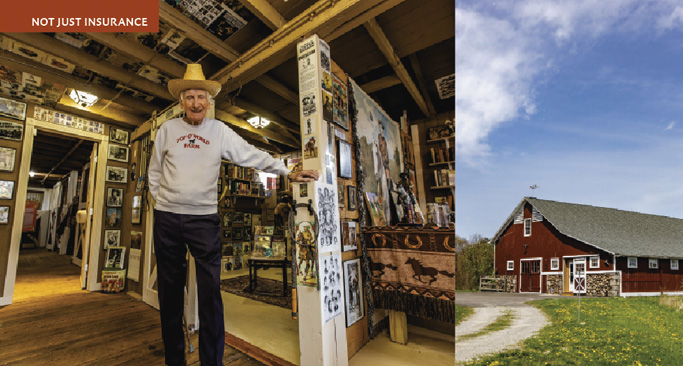Retired broker Al Singer’s lifelong collection of memorabilia
brings the frontier to life at his private Connecticut museum
(As you know, there’s a whole lot more to insurance people than simply doing insurance stuff. In “Not Just Insurance,” we look at what keeps your industry peers busy outside the traditional nine-to-five workday.)
By Maura C. Ciccarelli
“When I got married in 1958, I thought my whole collection was gone.
But my father had stored it in his Manhattan luggage business warehouse. He gave it all back to me. I was so happy.”
—Al Singer
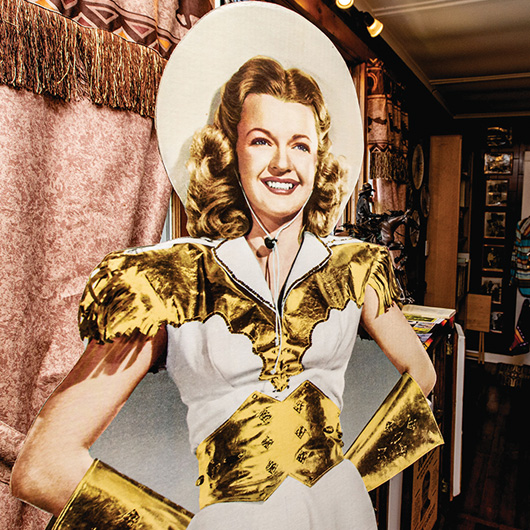
Walk into the Wild West Museum on the 33-acre Top-O-World Farm in Litchfield, Connecticut, and you’re transported back 80 years to a time when cowboys riding the wide-open spaces in the movies spurred Al Singer’s lifelong passion for collecting western memorabilia.
From floor to ceiling in 18 different rooms spanning a cottage and a barn, the 89-year-old Bronx-born “Cowboy Al” proudly displays thousands of artifacts that preserve the heritage of the Old West, both fictional and historical.
Even though he grew up in the Bronx, “the West was part of my life,” explains Singer, the founder and former owner of the successful Singer Nelson Charlmers specialty broker in Teaneck, New Jersey.
Since its opening in 2020, the free, private museum has hosted more than 600 visitors—and counting. You can see memorabilia featuring lawman Wyatt Earp and gunfighter Doc Holiday, the great Indian leaders Crazy Horse and Sitting Bull, outlaws Frank and Jesse James, and Buffalo Bill and Annie Oakley, along with fictional legends like the Lone Ranger and Tonto, and movie stars like John Wayne, Roy Rogers, and Dale Evans, to name just a few.
The museum includes a huge range of artifacts: photographs, posters, collector’s cards, toys, games, fine oil paintings, bronze statues, books, magazines, hats, belt buckles, furniture, home décor, life-sized cutouts of Western film stars and so much more.
Silver screen inspiration
“To this day, I love Westerns and I’m thrilled that the West is coming back,” says Singer, citing a future Broadway production about Roy Rogers and his wife Dale Evans called Happy Trails and the stage adaptation of the movie High Noon, along with the popularity of the Yellowstone TV series.
In addition to loving the action and adventure of the movies and radio shows, Singer particularly admires the code they presented, where cowboys were heroes seeking justice, only wounding villains and outlaws so they could capture them.
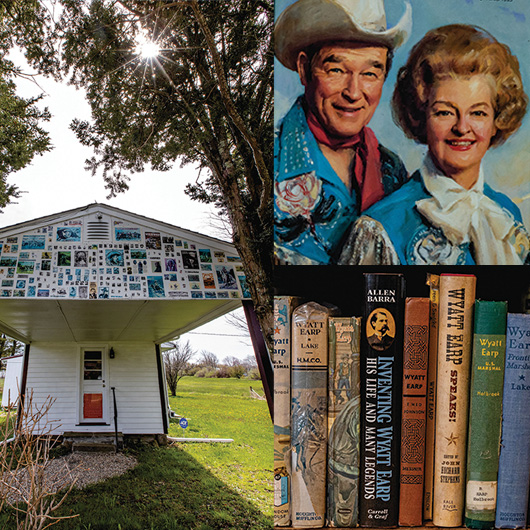
Singer says he became an avid collector starting at age eight. He’d put a penny in a vending machine to get a card picturing a Western movie star, always hoping for the best character of them all: the Lone Ranger. Naturally, there was never any question from his family and friends about what gifts he would like: “They knew my passion for the West and they all bought into it,” he says.
His sister helped him create his first album of memorabilia, which is displayed at the Wild West Museum along with several others. He taped in cowboy cards, pictures, comic books, and anything else cultural or historical about the Wild West that he could find.
“I liked to flip through the pages and see how the cowboys lived,” he says. “It just seemed to me to be a very cool way of being part of the West.”
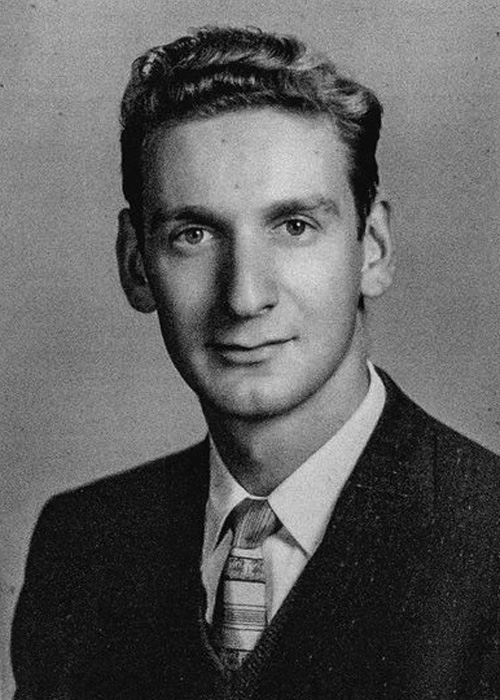
At Singer Nelson Charlmers, Singer showed visitors some of his favorite memorabilia in his office. He also incorporated the Lone Ranger into his agency’s advertisements with the slogan, “Let us unmask your coverage and find out what you’re not covered for.”
The agency, which specializes in architecture, engineering, and law firms, joined Risk Strategies in 2013. His son David is still with Risk Strategies as a senior managing director.
In 2000, Singer was honored with the inaugural Rough Notes Community Service Award for his nonprofit, People Against Children Starving (PACS), which raised money to support the Feed the Children network. “For America to have kids going to bed hungry is unbelievable,” he says.
Living the cowboy life
Cowboy Al’s partner in collecting was his wife, Rhoda, who passed away in 2022. Three years after they married, the Singers traveled to the Grand Canyon in 1961. After looking over the edge at the steep downward trail that had no railings, they decided against their original plan for a mule ride to the river below.
Instead, they enjoyed the view from the top and booked a stay at the Tanque Verde Ranch in Tucson, Arizona, where they could ride horses over far more favorable landscapes. For decades after that, they’d visit that ranch or others in Arizona, Colorado, and California to spend a couple of weeks living the cowboy lifestyle.
Although they never rode down into the canyon, Singer says, his wife “loved riding and became a very good rider. And luckily, she bought into my craziness of being a cowboy and wanting to build a collection and to have fun.”
They went to countless rodeos and events over the years where he met some of his childhood heroes. “We had the pleasure of meeting Roy Rogers and Dale Evans, Gene Autry, and Clayton Moore (the Lone Ranger),” he remembers.
In their travels, they stopped at antique stores, where Singer bought the majority of his Old West artifacts.
In 1986, they purchased the 33-acre Top-O-World Farm in Connecticut so they’d have enough space to have horses of their own. Over the years, they raised 15 Arabian horses to accommodate themselves and the family, which included three children, David, Jonathan, and Sharon, their spouses, and the Singers’ seven grandchildren, as well as other guests. Not surprisingly, Singer’s motto is: “The family that rides together, stays together.”
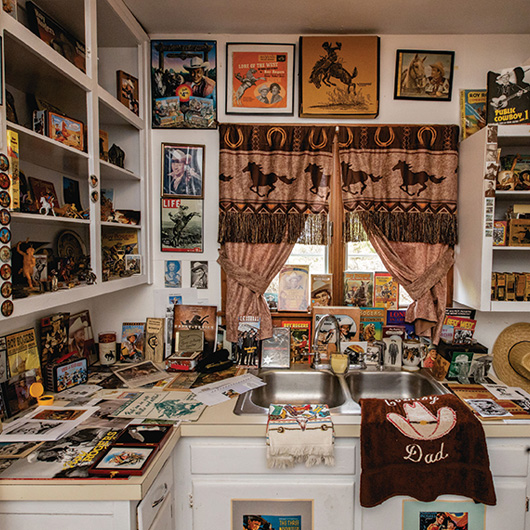
The Wild West Museum
“When I got married in 1958, I thought my whole collection was gone,” Singer says of the things he had collected as a kid. “But my father had stored it in his Manhattan luggage business warehouse. He gave it all back to me. I was so happy.”
Over the years, he’s displayed his collection at home and at the office, but much of it was stored unseen in boxes. Several years ago, his son David suggested that his dad consolidate the collection in a free, private museum. When the Singers sold their horses, additional exhibit space became available in the barn.
Additional artifacts
Singer says he’s stopped buying new items for the museum because he’s getting so many donations. These have included TV Guides featuring the old Western shows, a bronze statue by the famous Western artist Frederic Remington, videos of old movies and TV shows, and more.
“So many people have donated amazing stuff,” says Singer, noting that a plaque on the artifact lists the donor’s name.
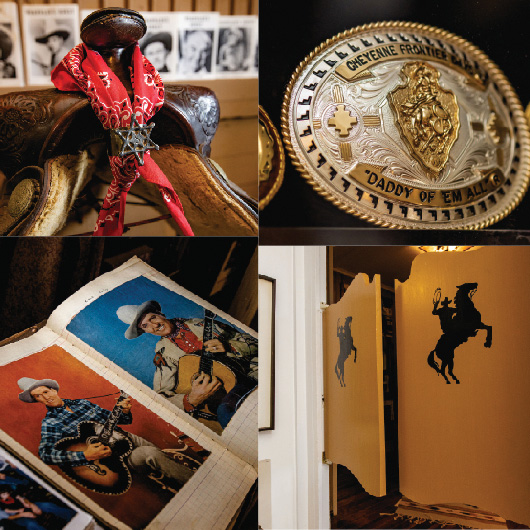
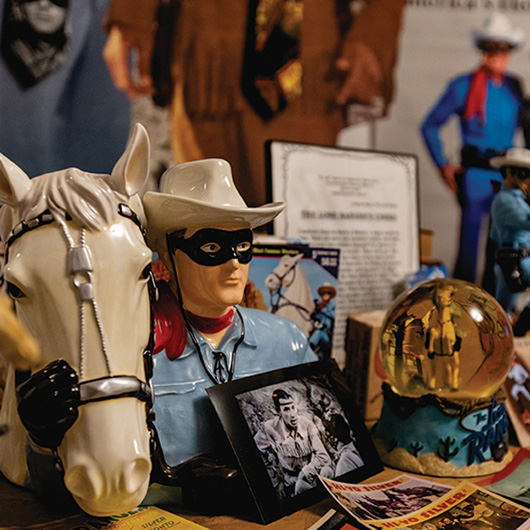
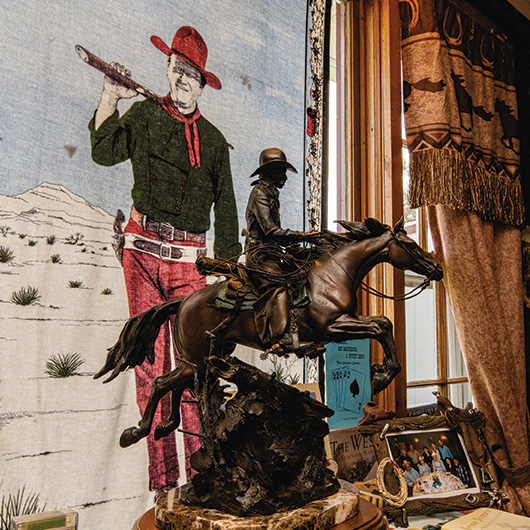
Many visitors have told him that while they enjoy art exhibits at major museums, they love the Wild West Museum because it’s all about “their own memories from growing up.” They’ve also brought along their children or grandchildren to give their families a taste of what they loved in their own childhoods.
As people walk through the museum, they are treated to recordings of Western cowboy music or can sit and watch videos of The Lone Ranger episodes and other classics, which some young people experience for the first time. “We really make it a nice experience,” he says.
A grand entrance
Cowboy Al has a sense of the dramatic that accompanies his love of the Old West. For his 65th birthday party at a hotel in Tenafly, New Jersey, all the guests assembled outside the main entrance at high noon while The Lone Ranger theme song played over the loudspeakers.
Singer surprised them by riding up on a white horse dressed in full Lone Ranger attire—including the famous mask and a set of costume guns sitting in his hip belt holsters. Everyone cheered and cars going past the hotel honked their horns. After, guests had a chance to sit on the horse as well as have their picture taken with Singer as the famous “Masked Man.”
“I have a whole album of me as the Lone Ranger,” he says. “I look pretty good, by the way.”
Later, the local police got a surprise when they pulled over Singer’s car for doing 35 in a 25-mph zone as he drove home. He was still wearing his Lone Ranger costume—including the guns. Luckily, the story behind the costume got him out of a ticket.
“They said they couldn’t wait to get back to their precinct and tell everybody,” he remembers with a laugh.
Legacy
As for the future, Singer has arranged for his seven grandchildren to manage the Wild West Museum through the Singer Family Foundation, continuing to share the legacy of the past that he has built up over so many decades.
“I never, ever dreamt that I’d have a museum,” says Singer. But, today, he has ample space where visitors can enjoy the historical and fictional stories of the bygone era of the Old West, as collected over 80 years by Cowboy Al Singer.
Interested in visiting the Wild West Museum? Contact Cowboy Al Singer at cowboyal336@gmail.com.
The author
Maura C. Ciccarelli is a longtime freelance journalist originally from Philadelphia. She writes about business and more from an adobe home in southern New Mexico, after spending nine years living on the road fulltime with her husband in their Airstream trailer.

